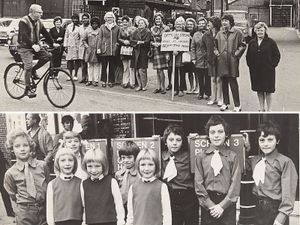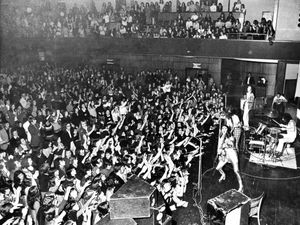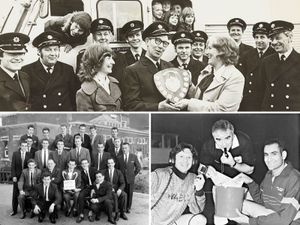Book reveals battle-scarred Bridgnorth's wartime story
For Hitler's war machine, Bridgnorth was truly a town on the map.
And now local historian and author Clive Gwilt has told the story of the town's wartime experience, from the Blitz to the atomic bomb, and from the arrival of evacuees to its role in training hordes of new recruits for the RAF.
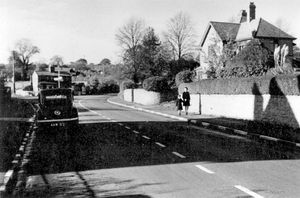
Clive has been researching aspects of Bridgnorth's history for over 48 years and written many books, the latest of which is called "Bridgnorth in WWII."
He says that documents found by a British soldier at a deserted Nazi post in Belgium included a map which earmarked Bridgnorth as a place where Hitler hoped to set up camp.
"The astonishing detail of the map made it clear that the regime had some high level strategic purpose for the town. I'm sure some of his generals had hunted in the Apley estate for years before the war and he had wanted Apley Hall as his Midlands base," he said.
"Experts believe that Hitler picked Bridgnorth because it was away from the urbanised West Midlands, was geographically in the middle of England, had an air base nearby at Cosford, and he could use RAF Bridgnorth as a concentration camp. His southern home was going to be Blenheim Palace."
Clive said: "I decided to write the book about 12 months ago when I discovered some German documents the Americans captured after the Second World War. They included maps and flyover photos of Bridgnorth and Ditton Priors.
"As I was moving house I decided to sort out all my 35 history folders which included two on World War Two. While sorting them out I regained my interest in Hitler and the war including several articles written by the Star. I managed to locate albums of photos from the era and drove to Wales to copy them.
"Many of the photos have never been published before and I am indebted to the people who kindly allowed me to use them.
"I am now retired and have set up a Facebook group – Bridgnorth History, Memories and Interesting Facts – which has gained over a thousand members in two weeks.
"I am now after new ideas for my next book as I now have over 30 publications for sale. The book is available from myself, through the Facebook group, at Urban Angel in Bridgnorth High Street or from the library and information centre for £10."
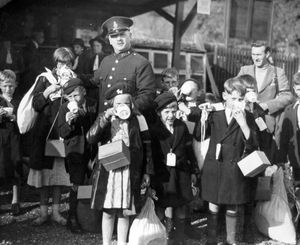
Clive also has a book signing lined up at Bridgnorth Library on May 27, from noon to 2pm.
The book runs to 80 pages and is a chronology of events, including the night of August 29, 1940, which has left the town battle scarred to this day, after a Luftwaffe raider dropped a string of bombs which caused damage and loss of life. The site of a destroyed cottage is now a memorial garden.
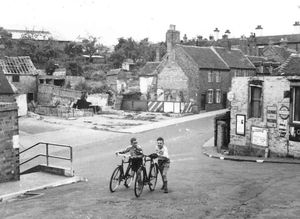
Perhaps less well known is the part the senior science teacher and music master at Bridgnorth Grammar School, Dr Ernest Titterton, played in the development of the atomic bomb.
"Shortly after the outbreak of war in September 1939 he was recalled to resume scientific works in connection with the European war which he was actively engaged in until November 1943.
"He was chosen to proceed to the USA by Sir James Chadwick to assist with the production of the atom bomb and hydrogen bombs. He worked with a Professor Oliphant and 6,000 other people.
"He helped create the world's first atom bomb and wrote after the war to a former colleague saying, 'I was in the main control dugout, 10,000 yards from the bomb and it was the most fantastic and frightening thing I have ever seen. Indeed, if the nations cannot henceforth live in peace then there is little doubt that the end of the world is in sight'."
Through the RGD works, the town was to play a key role in the top secret electronics war.
Then there was the destroyer HMS Whirlwind which was "adopted" by Bridgnorth Voluntary Service and St Leonard's Mothers Union, who made knitted clothing for the crew which was sent off monthly. The last consignment was sent on July 7, 1940, but never arrived – the ship had been sunk a day or two beforehand by a U-boat.

The town's major military establishment was RAF Bridgnorth which was not an airfield but a base which gave basic training to thousands of RAF recruits. It had opened in November 1939 and continued in operation until February 1963.
Apart from the town's experience in the Blitz it was well away from the main fighting areas, but nevertheless prepared for the possibility of invasion, including through building anti-tank traps at strategic points and laying obstacles in Wellmeadow in case of an attempt at airborne landings.
War in Europe came to an end on May 8, 1945, and it was time for celebrations.
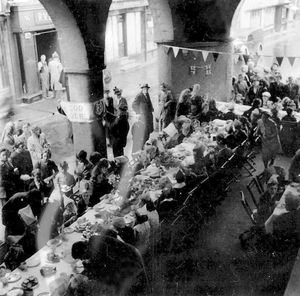
"There was dancing in the High Street near the Town Hall and in Low Town until well after midnight."

